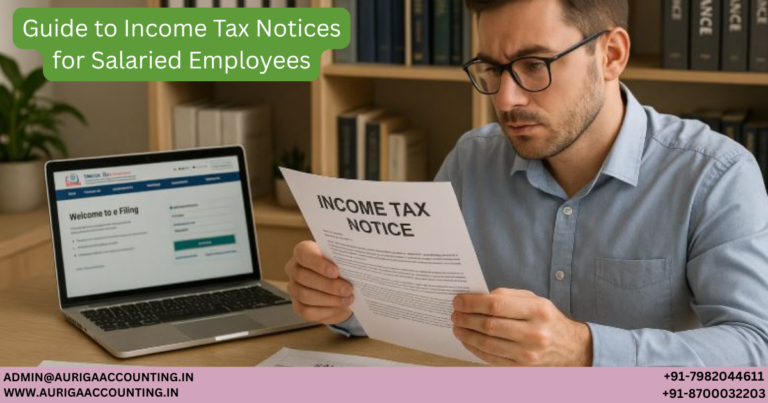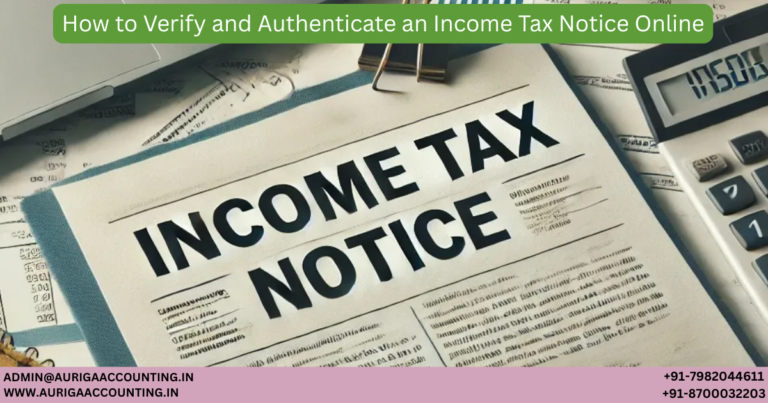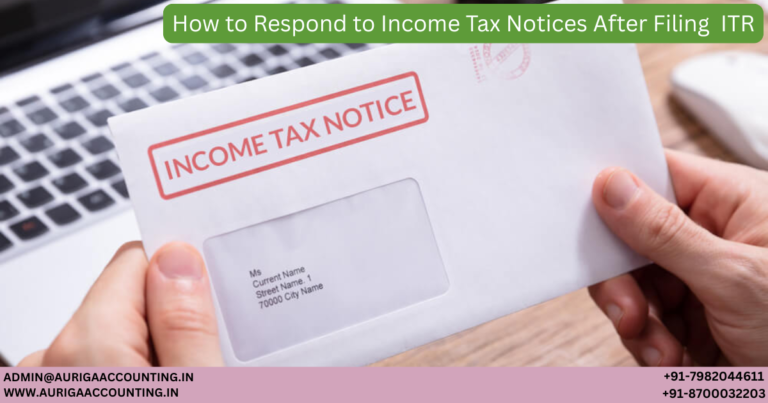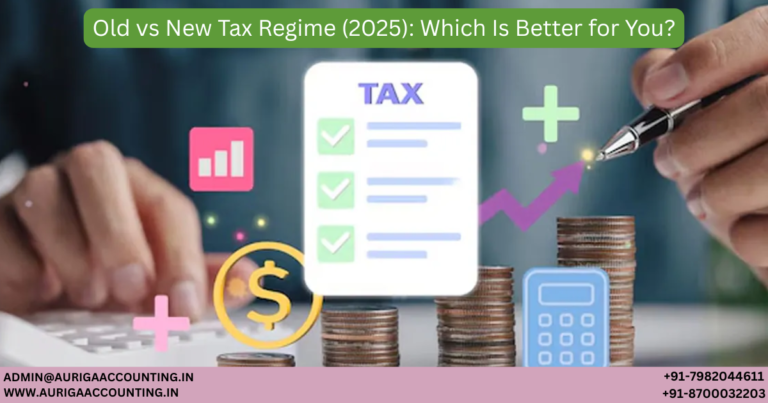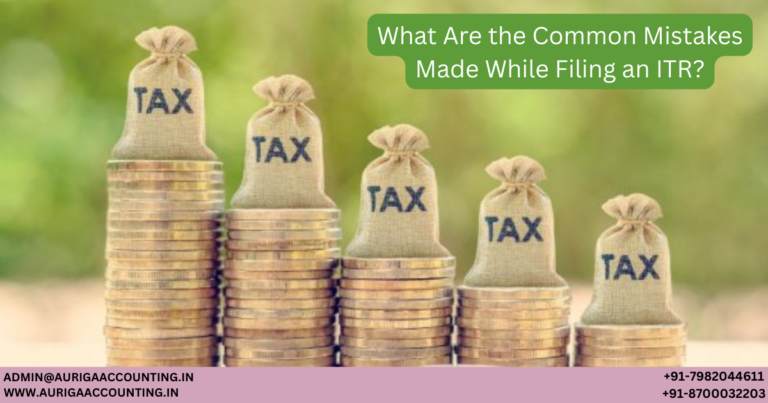Rohit is a seasoned legal writer known for translating complex legal concepts into clear, practical guidance. His insightful content empowers entrepreneurs to confidently navigate legal requirements, helping them start, manage, and grow their businesses with greater ease.
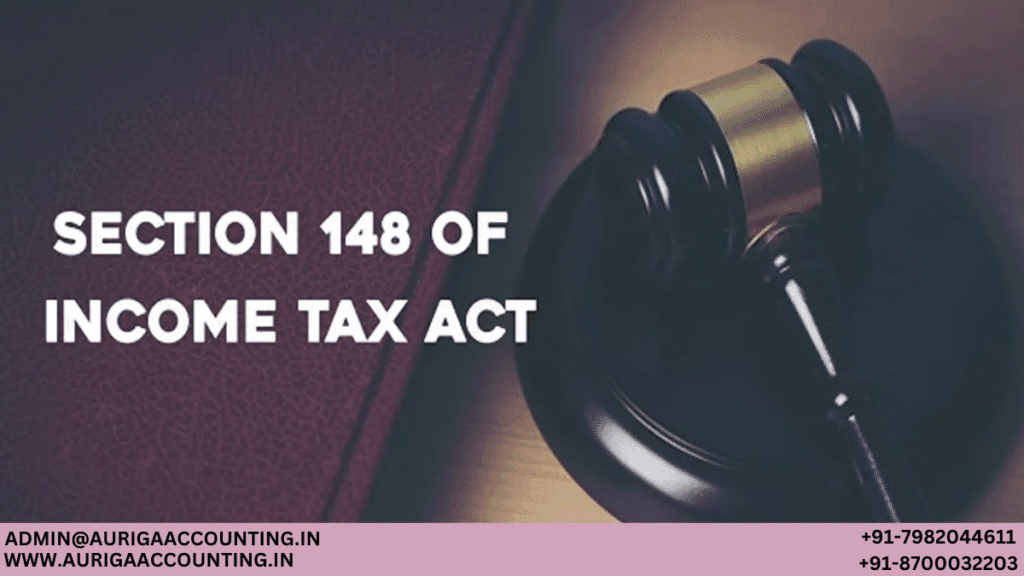
What is Section 148 of the Income Tax Act?
Introduction
ToggleUnder Section 147 of the Income Tax Act, 1961, the Income Tax Department is empowered to reassess income that may have escaped taxation in previously filed returns. If specific conditions are satisfied, the Assessing Officer can initiate a reassessment by issuing a notice under Section 148. This article provides a comprehensive overview of Section 148, detailing the grounds for reassessment, the procedure involved, and the responsibilities of taxpayers during the process.
Have you received a notice from the Income Tax Department? There’s no need to worry—IndiaFilings is here to support you. Our team of experienced tax professionals can help you understand the notice and guide you through the appropriate response
Section 148 of the Income Tax Act, 1961
Section 148 of the Income Tax Act, 1961 empowers the Assessing Officer to reopen and reassess an income tax return if there is reason to believe that income has escaped assessment. This provision ensures that the tax authorities can revisit earlier filings to address any misreporting, underreporting, or omission of income.
The reassessment process begins under Section 147, and a notice is issued under Section 148 to the concerned taxpayer, initiating formal proceedings. This legal mechanism plays a vital role in maintaining tax compliance and recovering revenue that might have been missed during the original assessment.
Key Provisions of Section 148
1. Notification of Reassessment
The Assessing Officer issues a formal notice to the taxpayer when there is reason to believe that income has escaped assessment. This notice marks the start of the reassessment procedure.
2. Obligation to File Return
Upon receiving the notice, the taxpayer is required to furnish their income tax return for the relevant assessment year, even if the return was previously filed.
3. Time Frame for Response
The return or reply must be submitted within 30 days (or as specified in the notice) from the date of issue.
4. Procedural Requirements
Returns must be submitted in accordance with the reassessment guidelines laid out under Section 148. Taxpayers must also provide any additional documents or clarifications as requested.
5. Communication of Reasons
Before issuing a notice, the Assessing Officer must inform the taxpayer of the reasons for initiating the reassessment, ensuring transparency in the process
Why a Notice May Be Issued Under Section 148
A notice under Section 148 is not arbitrary. The Assessing Officer must meet specific legal criteria before initiating reassessment:
“Reason to Believe” Standard: There must be credible evidence indicating that income chargeable to tax has escaped assessment.
Relevance of Information: The information must directly relate to the specific case and year in question.
Documented Justification: The AO is required to record detailed reasons before issuing the notice.
No Reassessment Without New Information: A reassessment cannot be triggered based merely on a change in opinion regarding previously disclosed facts.
Use of Discovered Facts: If previously disclosed facts later reveal non-compliance, they can be grounds for reassessment
Time Limits for Issuing Notices Under Section 148
1. Standard Time Limit
A notice can be issued up to 3 years from the end of the relevant assessment year.
2. Extended Time Limit (for High-Value Escapement)
If income that has escaped assessment is ₹50 lakh or more, the notice can be issued up to 10 years (revised to 5 years under Budget 2024; see below) from the end of the assessment year
Amendments Introduced by the Finance Bill 2024
The Finance Bill 2024 has proposed key changes to the time frame for issuing reassessment notices:
For Escaped Income Over ₹50 Lakh:
Reassessment time reduced from 10 years to 5 years (6 financial years).For Escaped Income Under ₹50 Lakh:
Time limit remains at 3 years (4 financial years).
Special Deadline for AY 2018–19
For assessment year 2018–19, where escaped income exceeds ₹50 lakh, the last date to issue a notice under Section 148 or pass an order under Section 148A is August 31, 2024
Who Can Authorize a Notice Under Section 148?
Under Section 151 of the Act:
Beyond 3 Years: Approval must be obtained from the Principal Chief Commissioner, Principal Commissioner, Chief Commissioner, or Commissioner.
Below Joint Commissioner Rank: If the AO is below the rank of Joint Commissioner, prior approval from a Joint Commissioner is required.
These higher authorities must review the reasons recorded by the AO and confirm the legitimacy of the reassessment action
How to Respond to a Notice Under Section 148
Receiving a notice under Section 148 is a serious matter. Here’s how you should respond:
Read the Notice Carefully: Check for the “reasons to believe” and ensure the notice is valid.
Request Reasons (if not provided): You are entitled to request the AO to furnish the recorded reasons for initiating reassessment.
Submit Return/Reply Promptly: File your updated return or submit a detailed reply within the deadline, along with supporting documents.
Challenge If Necessary: If the notice appears unjustified or procedurally flawed, you may challenge it legally.
Prepare for Next Steps: If the challenge fails, the AO may proceed with reassessment, which could lead to additional tax liability and penalties
Key Considerations When Responding to a Section 148 Notice
Receiving a notice under Section 148 of the Income Tax Act requires a careful, informed, and timely response. Here are essential steps and considerations to help you manage the situation effectively:
1. Understand the Basis of the Notice
Begin by identifying the reason behind the issuance of the notice. The Assessing Officer (AO) must have a valid reason to believe that income has escaped assessment. If the notice does not mention specific reasons, you have the legal right to request a copy of the recorded reasons from the AO before proceeding.
2. Evaluate the Justification
After reviewing the AO’s explanation, assess whether the grounds for reassessment are justified:
If the reasons appear valid, you should file the required return under Section 148 without delay.
If you’ve already submitted the return, ensure a copy is shared with the AO as part of your official response.
3. Ensure Accuracy and Completeness
When preparing your return, take extra care to:
Report all sources of income
Include accurate expense details
Attach relevant supporting documentation
Any discrepancies or omissions may attract penalties or further scrutiny.
4. Stay Legally Informed
Understanding the legal framework of Section 148—including time limits, procedural steps, and your rights—can help you respond confidently and avoid unintentional non-compliance.
By addressing the notice methodically and ensuring transparency in your tax disclosures, you reduce the risk of legal complications and maintain compliance with tax regulations
What Happens If You Ignore a Section 148 Notice?
Failing to respond to a Section 148 notice can lead to serious consequences:
The Assessing Officer may conduct a best judgment assessment, estimating your income based on available records and third-party information. This can result in a higher tax liability than what may be due.
You may lose the opportunity to explain or clarify discrepancies.
Additional interest and penalties may be imposed.
If you disagree with the assessment, you have the right to appeal:
First, to the Commissioner of Income Tax (Appeals)
And, if necessary, to the Income Tax Appellate Tribunal (ITAT)
However, responding proactively to the initial notice can help avoid unnecessary disputes and protect your financial interests
About the Author
Rohit
January 8, 2026
new
January 8, 2026
January 8, 2026
January 7, 2026
January 7, 2026
January 7, 2026
January 7, 2026
January 7, 2026
January 7, 2026
January 7, 2026
January 6, 2026
January 6, 2026
January 2, 2026
January 2, 2026
December 31, 2025
December 31, 2025
December 31, 2025
December 29, 2025
December 29, 2025
December 29, 2025
December 29, 2025
December 29, 2025
December 27, 2025
December 27, 2025
December 27, 2025
December 26, 2025
December 26, 2025
December 26, 2025
December 16, 2025
December 16, 2025
December 15, 2025
December 13, 2025
December 13, 2025
December 12, 2025
December 12, 2025
November 29, 2025
November 29, 2025
November 29, 2025
November 28, 2025
November 28, 2025
November 28, 2025
November 28, 2025
November 27, 2025
November 27, 2025
November 27, 2025
November 27, 2025
November 27, 2025
November 27, 2025
November 26, 2025
November 26, 2025
November 26, 2025
November 26, 2025
November 25, 2025
November 25, 2025
November 25, 2025
November 25, 2025
November 24, 2025
November 24, 2025
November 24, 2025
November 24, 2025
November 24, 2025
November 21, 2025
November 21, 2025
November 21, 2025
November 21, 2025
November 20, 2025
November 20, 2025
November 20, 2025
November 20, 2025
November 20, 2025
November 20, 2025
November 20, 2025
November 19, 2025
November 19, 2025
November 19, 2025
November 17, 2025
November 17, 2025
November 15, 2025
November 15, 2025
November 15, 2025
November 13, 2025
November 13, 2025
November 13, 2025
June 16, 2025
June 16, 2025
June 14, 2025
June 14, 2025
June 13, 2025
June 13, 2025
June 11, 2025
June 11, 2025
June 11, 2025
June 10, 2025
June 9, 2025
June 9, 2025
June 5, 2025
June 5, 2025
June 5, 2025
June 5, 2025
June 5, 2025
June 5, 2025
June 5, 2025
June 5, 2025
June 4, 2025
June 4, 2025
June 4, 2025
June 3, 2025
June 3, 2025
June 3, 2025
May 31, 2025
May 31, 2025
May 31, 2025
May 31, 2025
May 31, 2025
May 30, 2025
May 30, 2025
May 30, 2025
May 30, 2025
May 29, 2025
May 29, 2025
May 29, 2025
May 29, 2025
May 28, 2025
May 28, 2025
May 28, 2025
May 28, 2025
May 27, 2025
May 27, 2025
May 27, 2025
May 27, 2025
May 27, 2025
May 26, 2025
May 26, 2025
May 26, 2025
May 26, 2025
May 26, 2025
May 24, 2025
May 24, 2025
May 24, 2025
May 24, 2025
May 24, 2025
May 23, 2025
May 23, 2025
May 23, 2025
May 23, 2025
May 23, 2025
May 23, 2025
May 23, 2025
May 23, 2025
May 22, 2025
May 22, 2025
May 22, 2025
May 22, 2025
May 21, 2025
May 21, 2025
May 21, 2025
May 21, 2025
May 21, 2025
May 20, 2025
May 17, 2025
May 17, 2025
May 17, 2025
May 17, 2025
May 16, 2025
May 16, 2025
May 16, 2025
May 15, 2025
May 15, 2025
May 15, 2025
May 14, 2025
May 13, 2025
May 13, 2025
May 13, 2025
May 13, 2025
May 13, 2025
May 12, 2025
May 12, 2025
May 12, 2025
May 12, 2025
May 10, 2025
May 10, 2025
May 10, 2025
May 10, 2025
May 9, 2025
May 9, 2025
May 9, 2025
May 9, 2025
May 9, 2025
May 8, 2025
May 8, 2025
May 8, 2025
May 8, 2025
May 8, 2025
May 8, 2025
May 8, 2025
May 7, 2025
May 7, 2025
May 7, 2025
May 7, 2025
May 7, 2025
May 7, 2025
May 6, 2025
May 5, 2025
May 5, 2025
May 5, 2025
May 3, 2025
May 3, 2025
May 3, 2025
May 3, 2025
May 3, 2025
April 30, 2025
April 30, 2025
April 29, 2025
April 28, 2025
April 28, 2025
April 28, 2025
April 28, 2025
April 26, 2025
April 26, 2025
April 26, 2025
April 26, 2025
April 26, 2025
April 25, 2025
April 25, 2025
April 24, 2025
April 23, 2025
February 1, 2024
October 30, 2023
October 30, 2023
October 30, 2023
October 30, 2023
October 28, 2023
October 28, 2023
October 28, 2023
October 28, 2023
October 28, 2023
October 28, 2023
October 28, 2023
October 28, 2023
October 28, 2023
October 27, 2023
October 27, 2023
October 27, 2023
October 27, 2023
October 27, 2023
October 27, 2023
October 27, 2023
October 27, 2023
October 26, 2023
October 26, 2023
October 26, 2023
October 26, 2023
October 26, 2023
October 23, 2023
October 23, 2023
October 23, 2023
October 23, 2023
October 23, 2023
October 23, 2023
October 23, 2023
October 23, 2023
October 23, 2023
October 23, 2023
October 23, 2023
October 23, 2023
October 23, 2023
October 23, 2023
October 23, 2023
October 21, 2023
October 21, 2023
October 21, 2023
October 21, 2023
October 21, 2023
October 21, 2023
October 21, 2023
October 21, 2023
October 21, 2023
October 21, 2023
October 21, 2023
October 21, 2023
October 21, 2023
September 7, 2023
September 7, 2023
September 6, 2023
September 6, 2023
September 5, 2023
September 5, 2023
September 5, 2023
September 5, 2023
September 4, 2023
September 4, 2023
September 4, 2023
September 4, 2023
September 1, 2023
September 1, 2023
September 1, 2023
September 1, 2023
August 30, 2023
August 30, 2023
August 30, 2023
August 29, 2023
August 29, 2023
August 29, 2023
August 29, 2023
August 28, 2023
August 28, 2023
August 28, 2023
August 28, 2023
August 28, 2023
August 26, 2023
August 26, 2023
August 26, 2023
August 26, 2023
August 25, 2023
August 25, 2023
August 25, 2023
August 25, 2023
August 24, 2023
August 24, 2023
August 24, 2023
August 24, 2023
August 22, 2023
August 22, 2023
August 22, 2023
August 22, 2023
August 22, 2023
August 21, 2023
August 21, 2023
August 21, 2023
August 21, 2023
RELATED ARTICLES
Tax Saving...
Section 80GGA:...
Guide to Income...
How to Verify...
Handling Income...
How to Respond...
What Are the...
No posts found






